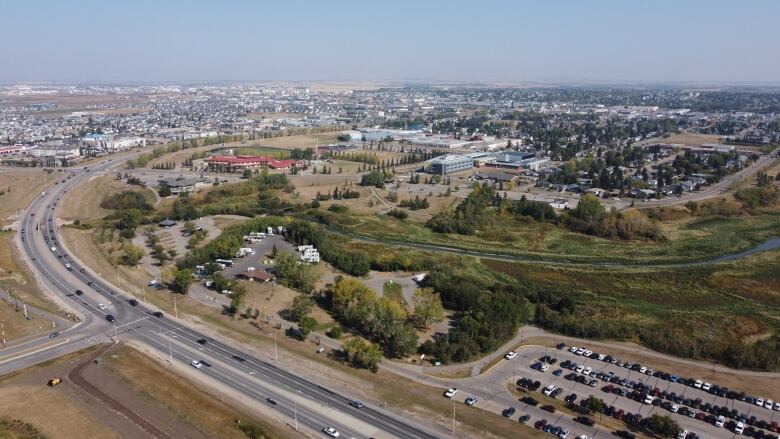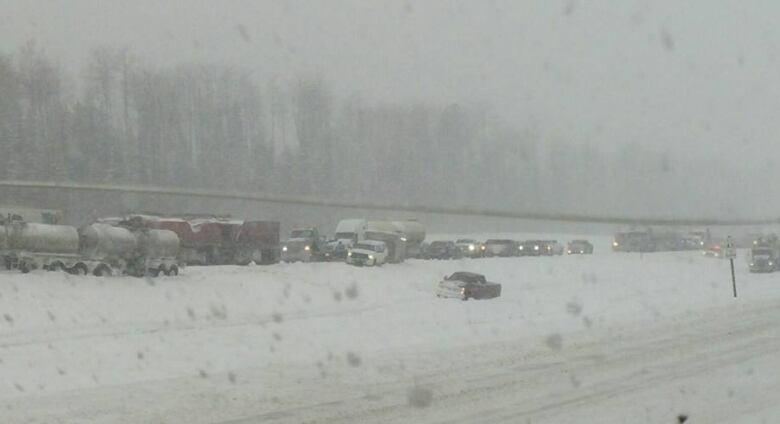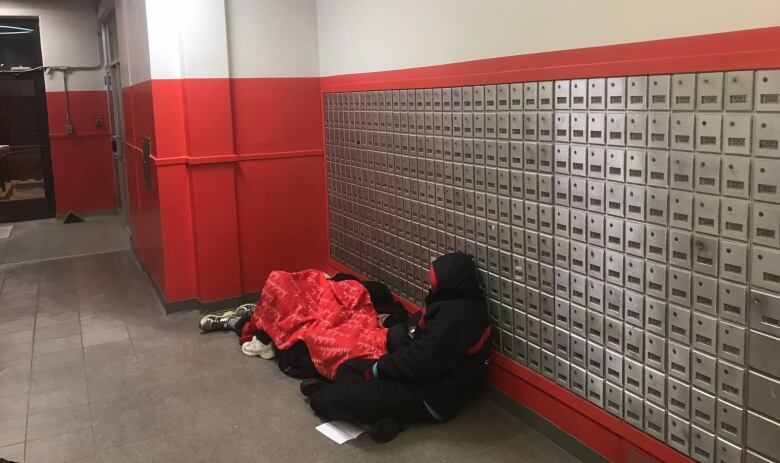Alberta's other 4H club: Help needed for our highways, our homeless and our health
I know the provincial government values our resources. But does it value us?


This column is an opinion by Glory Przekop, who lives in the town of Beaverlodge, west of Grande Prairie, Alta. For more information about CBC's Alberta election 2023 opinion series, visit theMy Priorityhome page.
Highways, housing and health care the three Hs. Likely every community can relate to these needs, so why is my regionspecial?
That's a heavy question. Answering it requires me to start with everyone's favourite topic of discussion: the oil and gas industry.
No one loves O&G more than Grande Prairie and the Peace Country of northwestern Alberta. Driving the highways or back roads, you'll see work trucks, big and small, heading to gas plants, rigs and pipelines. Someare located in the middle of a farmer's field, others surrounded by dense forest in the middle of nowhere.

Which brings me to the agricultural and forestry sectors. Grains are what is grown here, lots of them. There are fields as far as the eye can see, most operated by families that have been here for generations, who built homesteads on the very land they farm today. As for forestry, there are plenty of logging trucks mixed in with those O&G vehicles. And yes, when I am approaching one on the highway I get a Final Destination flashback.
O&G? Check. Ag? Check. Forestry? Check.
But let's not forget tourism, people in their trucks, trailers, vans and campers who have come here to see the sights. In the summer, Highway 43 is littered with vehicles, many with American plates heading north to Alaska. Along the way, they see the city of Grande Prairie, with its strong arts and events scene, the award-winning Philip J. Currie Dinosaur Museum in Wembley, Alta., numerous waterfalls, rolling hills, lakes, camping, off-roading and even a mountain or two.
Road assistance
I think I made it clear that our highways and roads are used. A lot. After years of lobbying to twin Highway 40 a well-used route known to many travellers as the Scenic Route to Alaska the NDP government pledged in 2018 to twin it. So why did it take until 2021 for construction to begin? The project is still ongoing with competition expected in 2024.
And why did the Highway 43 bypass project, needed to reduce the amount of heavy truck traffic going through the city of Grande Prairie, sit on the to-do list for years? The first part of the project was completed in 2010, but it took until September 2019 for it to be completed.

Why the wait? Especially when a lot of government revenue comes from this area by way of the very trucks that drive these roads.
And it's not just the highways. Many of the country roads are also in rough shape due to the heavy, constant traffic. Before we moved into town, we lived on an acreage. I remember standing on our driveway as I waited with my kids for their 7:30 a.m. bus pick-up. Mere feet away was the gravel road, where trucks roared by kicking up dust. Some would notice us and tap their brakes. Most didn't.
Nowhere to live
All that traffic leads to the second H on my list.
Housing. The affordable kind.
Because of our natural resources, many people come here to work. Some are single, some come with their families. Some don't list this area as their permanent residence, meaning the municipalities don't get their taxes to use on various services. Some fall behind or simply can't afford necessities or rent. In the worst scenarios, they're left without a place to live and no money to get back home.

That's when the local social services non-profit sector steps in.
One of the newest organizations is in the hamlet of Hythe, Alta., located near the B.C. border about 60 kilometres northwest of Grande Prairie. Started in late 2021, the Helping Homeless Restart Society works with vulnerable adults to assist with housing and other supports.
Recognizing the concern years ago, the County of Grande Prairie has conducted two homeless surveys in 2018 and 2020 and a third one that just wrapped up in March.
The 2020 survey noted: "Out of 52 people surveyed, 42 (80.8 per cent) were found to be living in situations defined as homeless or 'housing-insecure.'"
Community health at stake
The final H is health care and in our corner of Alberta, there's no better word than "hospital" to put the issue into perspective.
The Grande Prairie Regional Hospital was announced in 2007 by then-premier Ed Stelmach. About 15 years, five premiers and two governments later, the hospital was officially opened in February 2022, when Jason Kenney's UCP government was in power.
Tell me you're not a government priority without telling me you're not a government priority.

And don't forget the region's other hospital in the town of Beaverlodge, Alta., about 40 kilometres west of Grande Prairie.
The Beaverlodge Municipal Hospital is the oldest AHS owned and operated facility, having opened in 1956. Talks of replacing it started in 1986; land for the hospital was even donated by Doris McFarlane, now deceased, who moved there in 1948 for a nursing job.
Fast-forward to Budget 2023, where some money was promised for "health centre replacement planning." Nothing about construction.
Meanwhile the Beaverlodge emergency department has been closed repeatedly since May because of doctor shortages. And needless to say, just like many rural Albertans, you have a better chance of winning the lottery than finding a family doctor.
So yes, we have the natural resources and the jobs. It's the services to support it all that are hurting. Increasingly, those services are falling to the municipalities or non-profits or they're just not available at all.
Highways, housing and health care. Where's the help?
My Priority
What's the one thing that means the most to you in terms of the provincial election and why is that? We recruited over a dozen residents from across Albertato answer that question.
Read their opinion pieces as they're publishedatcbc.ca/opinionproject.
Keep in mind, these pieces should not be taken asendorsements of any particular political party by either the writers or the CBC. They are expressions of the writers' points of view, and a look at how those opinions came to be formed.












_(720p).jpg)


 OFFICIAL HD MUSIC VIDEO.jpg)
.jpg)



























































































